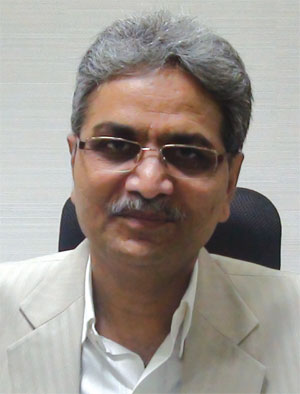
 Ramnath Sonawane
Ramnath Sonawane
Commisioner, Kalyan Dombivli Municipal Corporation
What are the main features of the e-Governance solution implemented at KDMC?
Basically we started with the solution that should be integrated with all kind of services which are having citizen centricity, along with the internal processes that should be integrated in such a way that anyone can access it. So when the system was designed at the start itself we found out what the major requirements of citizens are. The citizen requires two things: one, they want service and the other, lodge complaints. The e-Governance solution implemented at KDMC makes the process of applying for services as well as lodging complaints totally online. The software has been designed to ensure full satisfaction to customers or citizens.
The Enterprise Resource Planning (ERP) model implemented at KDMC has ensured that all resources of the corporation are working in integration. This has helped to bring transparency about what is happening inside; ensure that there is no duplication of work, there is no duplication of data and data is also accessible to everyone. Overall, it has promoted accountability, responsibility, transparency and efficiency.

How is e-Governance working out in other parts of the state?
The same solution has been implemented by the Government of Maharashtra in all 222 municipal corporations. Out of this, implementation is complete in 220 corporations and 4–5 services are live. This was the manner in which the implementation was taken up at KDMC also. Now there are 23 Departments and services that are live. Complaint lodging and redressal system is working in 70 -80 places.

The e-Governance solutions at each of the 222 locations would be independent, but would allow some analysis. For example, if the government wants to compare what Nagpur is doing with what Kalian is doing or Amravati is doing, or to find out the rate of recovery and the rate of efficiency, it would be possible to generate appropriate MIS reports of the services and to develop the new model which will help in decision making. The government will be able to track the report and the working status of the council.
A Decision Support System is also in the process of being developed for the project so that the data can be analysed and utilised in an efficient manner.
How has technology improved the functioning of KDMC?
Earlier, when a complaint was lodged, there was no mechanism to track it and there was no record of number of complaints or type of complaints etc. Today, it is possible to track individual complaints, analyse patterns, categorise them by type and so on. The new system has established a watchdog for each complains. If an officer has more than 25 complains pending in their account at the end of the month, a warning would be generated and the officer would be asked to improve the level of efficiency. A token deduction of Rs 50 is also made from the salary. The amount may not be significant but it acts as a blot on the officer’s record. The system would have identified the individual for low efficiency and no one would want that to be on their service record. As a result, officer typically carry over only 10 -12 complaints.
Even otherwise, the tracking mechanism has colour codes for different stages of complaints, so that it is possible to see each individual complaint and deduce at what stage of resolution it is stuck on any given date. This alone has improved governance significantly. Of course, the other modules have improved efficiency and service delivery as well.
Be a part of Elets Collaborative Initiatives. Join Us for Upcoming Events and explore business opportunities. Like us on Facebook , connect with us on LinkedIn and follow us on Twitter, Instagram.











